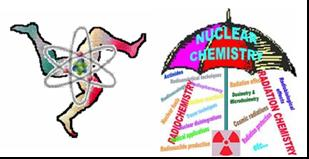Speakers
Dr
Graciela Zarazua
(Instituto Nacional de Investigaciones Nucleares)Prof.
Trinidad Martinez
(UNAM. Facultad de Ciencias)
Description
The Lerma River is born near the Toluca city. This city has an industrial, commercial and agricultural activity, the river then continues their flow to the Tepuxtepec dam which is used as a water reservoir and fish production for the local population. The concentration of heavy metals (Cr, Ni, Cu, Zn, Cd, Hg and Pb) in gills, liver, kidney and muscle of herbivorous carp (Ctenopharygodon idella) from Tepuxtepec Dam, Mexico was evaluated. The samples were collected from six regions in the dam and analyzed in triplicate by X Ray Fluorescence technique. A TXRF spectrometer “TX-2000 Ital Structures” with a Si(Li) detector and a resolution of 140 eV (FWHM) at Mn Kα. A Mo tube (40 kV, 30 mA) with 17.4 KeV excitation energy was used. The mean concentration in tissues decrease in the sequence: Kidney ≈ Gills > Liver > Muscle; the range of concentration for Zn was 26.68-816.67 mg/Kg followed by Cu: 1.18-35.81 mg/Kg, Cr: 1.20-5.80 mg/Kg, Cd: 0.30-7.00 mg/Kg, Ni: 0.40-3.70 mg/Kg, Pb: <0.02-1.92 mg/Kg and Hg: <0.03-1.14 mg/Kg. Chromium and mercury concentrations slightly exceed the limits for fish proposed by FAO/WHO and Mexican legislation for human consumption in the edible parts of fish from each one of the regions of the Tepuxtepec dam. The results show that metal accumulation in herbivorous carp tissues was higher in regions 3, 4 than the others, which could be due to the influence of Lerma River, one of the most polluted rivers of Mexico.
Author
Dr
Graciela Zarazua
(Instituto Nacional de Investigaciones Nucleares)
Co-authors
Dr
Carmen Carreño-De Leon
(Instituto Tecnologico de Toluca)
Ms
Karina Giron
(UAEM. Facultad de Ciencias)
Dr
Pedro Avila-Perez
(Instituto Nacional de Investigaciones Nucleares)
Dr
Samuel Tejeda
(Instituto Nacional de Investigaciones Nucleares)
Prof.
Trinidad Martinez
(UNAM. Facultad de Ciencias)
